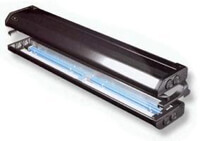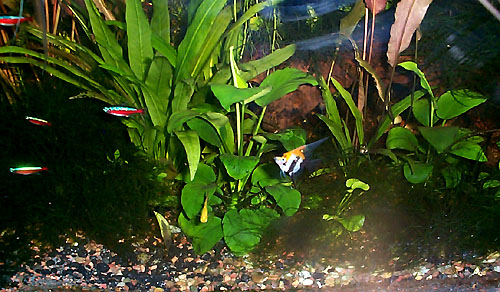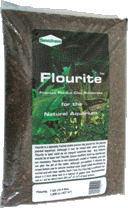When I first started out in this hobby, I dreamed of a lush, planted tank, and only ended up with a half-year struggle of pale, dying leaves, finally surrendering to the ease of plastic plants. I never liked them, and kept trying, and only recently have I managed to achieve that beautiful underwater jungle.

If this is what you are trying for too, then be prepared to spend a little more money and time than just with a fish-only tank, but in the end it is definately all worth it. Plants are living creatures with their own requirements; they won't just flourish without any attention.
Sometimes these requirements are in accord with those of their finned neighbors (both benefit from frequent water changes and often have similar pH/temperature requirements) but sometimes they are at odds with one another (most plants prefer less water agitation and aeration, which can deplete CO2, whereas fish can only benefit from more aeration, especially in an overcrowded tank; addition of peat moss as a source of fertilizer can be a source of bacterial and fungal disease organisms for fish;
also, medications that cure fish diseases can be deadly for most plants). Thus, the key word to remember with planted aquaria is *balance*.
Unlike fish, however, I have found that it is best to add a lot of plants all at once (hardier species first to condition the tank for plant growth) instead of a little at a time12. Adding just one or two difficult plants at first can let algae get a foothold in the aquarium, which in turn makes it harder for the plants to do well. The addition of many "easy care" plants (such as Wisteria, Anarchis, Vallisneria, Hornwort and Parrot's Feather) at once depletes most of the nutrients from the water and can prevent algae growth before it starts; also, they make the environment less harsh for more demanding plants. From my experience, I've distilled the secret to a successful planted tank down to three important elements:

There is just no getting around it; lighting is absolutely key in getting plants to grow well. Those fluorescent lights that come default with the pet shop tank covers and hoods may look bright to the human eye but they are really the cheapest kind of "cool" lighting available and will NOT do your plants any good. With lighting, both wattage and spectrum are important. Most aquatic plants need 2 watts per one gallon of water (more in "deep" tanks and for demanding plants). Most "average hoods" do not even come close to providing this bare minimum for low light plants.
Plants need either a daylight spectrum bulb or one that targets the blue/red range. I have had success with Triton and Coralife 50/50 bulbs, but they can be pretty expensive, and cost-to-value, generic brands are more worthwhile (although the newer Triton bulbs last longer than regular bulbs without decreasing light output by much). I would say that the best way to go is to first of all ask for a DOUBLE light strip hood (these often don't come automatically with the prearranged setups sold at most pet stores) and put in one daylight and one actinic blue or partial actinic mix bulb in; my 54 gallon corner tank is doing amazingly well with this arrangement and the plants are just growing out of control, requiring frequent pruning. Some actinic bulbs give off more of a unnatural-looking bluish aura than others, so this may not be the best idea for everyone.
If money is not an object, metal halide lamps are ideal, but these often produce large amounts of heat and run upwards of several hundred dollars each (whereas daylight fluorescent bulbs are only a few dollars at the hardware store).
Another great solution I have found is power compact fluorescent lights (shown in the above picture). These work WONDERFULLY for planted tanks, because they run cool but give off great intensity, even for the same wattage. If you cannot find PC lights in your region, try eBay, sometimes you can find one for almost the same price as a NO (normal output) fluorescent, which won't grow plants nearly as well. Usually, however, expect to pay around 2-4X's the price of a NO light, but this is just the price we pay for good plant growth.
I do not recommend incandescent light hoods. They tend to overheat the water and encourage algal growth a lot more than all fluorescents.
Lastly, keep in mind that all fluorescent bulbs lose 50 percent of their luminosity every 6 months, so replacing them twice a year is necessary to keep your plants at their best.
I cannot emphasize enough how important the correct lights are, even to low-light plants such as java moss and java ferns!
![]()
Just like land plants, aquatic plants need replenishment of nutrients and minerals that are depleted. Aquarium plants can get some of this from fish waste, but it is a myth that this alone will be enough for most plants. There are many commercially available liquid fertilizers that are excellent (Seachem's Flourish works great for me; Tetra's FloraPride is another good brand to try); most are a mix of potash and chelated iron (one of the most important minerals for plant growth). Just make sure that they are especially for aquarium fertization and safe for fish, not general yard-type fertilizer which may contain pesticides, chlorine, or excessive phosphates (phosphates encourage algal growth). I would also recommend using them in conjunction with solid tablet-form fertilizers, which promotes healthy root growth and keep the nutrients locked up and inaccessable to algae. The ones I have been happiest about so far are AgSafe Plant Spikes offered by Arizona Gardens, which in my opinion, offers the best selection of discount (*not wholesale-only*) aquatic plants and plant accessories you can find on the web.

A group of cardinal tetras and a small angel swims in front of an Anubias nana and some swordplants.
Last but not least, I would be remiss if I didn't mention the most important plant nutrient of all: CO2. Absolutely essential for growth, it is often used up quicker than it can be regenerated in a medium-sized tank. Commercially available CO2 injectors can be quite expensive, so I highly recommend making one of the many homemade yeast fermentation contraptions seen on the internet. Homemade injectors are very useful and relatively easy-to-create little projects, but they must be observed carefully when starting them up (sometimes they generate negative pressure in the initial stages, which can end up siphoning water out of the tank continuously if you do not watch it in the first few hours).

Most sources recommend gravel in a 2-3mm size range. Fine sand packs too tightly to allow for good root growth and can form anoxic bubbles where the roots are, and overly course gravel collects too much rotting debris.
It is not essential that you use a special gravel other than the quartz gravel that is sold in most pet stores, however, if you use ordinary gravel, you should use tablet fertilizer regularly. I have gotten *excellent* results from using fluorite (fractured clay gravel), which itself becomes a slow-releasing source of iron. Other sites advocate more complex substrate layering, which I find impractical personally and not necessary for the average planted tank.
Do NOT use ordinary potting soil (the kind used for land plants), this has far too high an organic content and will rot in the tank. It can also introduce diseases and poisons that will kill your fish.